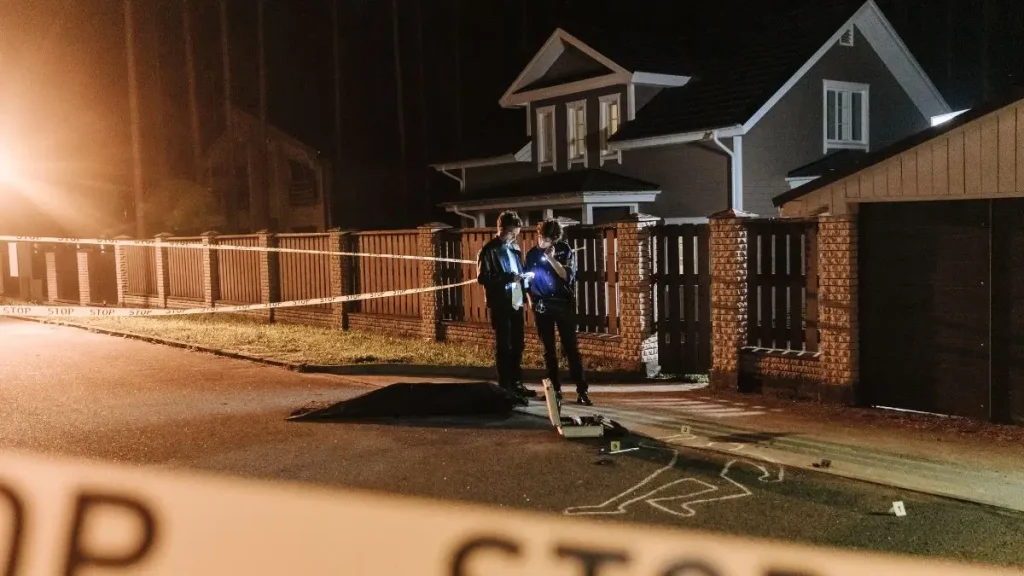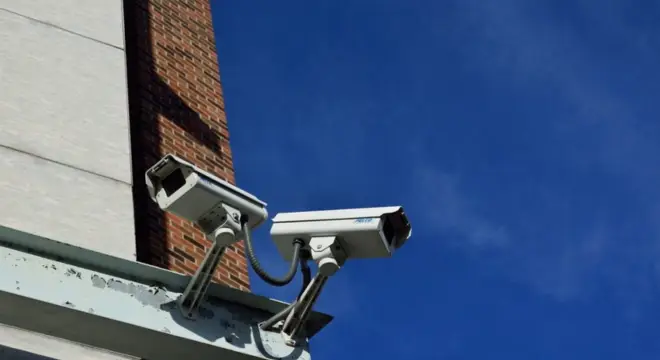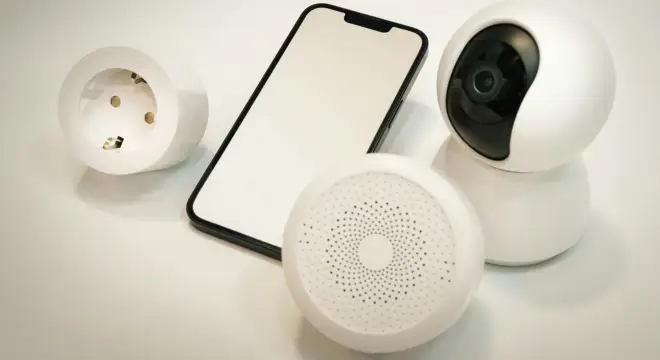Queens Home Targeted in $3 Million Jewelry Burglary
I dug through the police reports and local coverage so you don’t have to — what happened on Oct. 16 feels like something out of a movie, but it was painfully real. In the afternoon, three men dressed as construction workers forced open a rear door of a Jamaica Hills home near 160th Street and 84th Drive, removed a safe, and walked away with roughly $3.2 million in jewelry.
They fled eastbound on 84th Drive in a blue Hyundai Elantra. No one was hurt, but the homeowner — a jeweler — lost pieces that were both priceless and deeply personal.
This wasn’t random smash-and-grab; investigators say it was likely targeted. That detail changes everything about how you think of home security and who might be watching.
Stick with me — I’ll break down exactly how they pulled it off, why this house may have been chosen, and what you should do differently tonight. Before that, tell me: do you keep high-value items at home, or do you know someone who does.
How the $3 Million Jewelry Heist Unfolded?

According to an ABC7NY report, the break-in happened in broad daylight — sometime in the early afternoon on October 16. The suspects arrived in a blue Hyundai Elantra, dressed head-to-toe like construction workers, complete with vests and hard hats. They parked, walked to the back of the property, and forced open a rear door to get inside.
Once in, they went straight for a safe — not random electronics or cash lying around. That tells you they knew what they were after. Inside that safe was a jewelry collection worth an estimated $3.2 million. Within minutes, they loaded it up, slipped back into the car, and disappeared eastbound on 84th Drive before anyone nearby even realized what had happened.
No one was hurt, but what stands out to me is how quietly calculated this was. They didn’t panic, didn’t linger, and clearly knew the house layout or timing. This wasn’t luck — it was preparation.
Targeted Hit — The Victim Was a Queens Jeweler
ABC News later confirmed what many suspected: the victim is a jeweler. That single fact explains a lot. People in the jewelry business often keep valuable inventory or heirlooms at home for short periods, sometimes for cleaning or family use. To a thief, that makes the address worth watching.
Investigators believe the crew had prior knowledge — maybe through observation, maybe through someone who knew the homeowner’s routine. And that’s what makes this story so unsettling. If professionals can track when someone’s home or not, your expensive items aren’t safe just because you live in a quiet neighborhood.
I can’t help but think about the emotional toll too. For a jeweler, it’s not only about the money — some of those pieces probably had decades of family history attached. Losing that isn’t something insurance can fix.
Why Jamaica Hills Became a Perfect Target?
Jamaica Hills isn’t the kind of place where you expect a $3 million robbery. It’s a peaceful pocket of Queens — lined with tidy lawns, family homes, and a sense of calm. That calm might be part of the problem. Criminals know quiet streets mean fewer eyes and slower reactions.
Another factor is geography. The area connects quickly to main roads like Grand Central Parkway and Hillside Avenue, giving thieves multiple escape routes. In big-city terms, it’s the kind of neighborhood that looks safe but offers easy in-and-out access — a sweet spot for anyone planning a fast getaway.
If you live in a similar area, don’t assume your calm street protects you. It might actually make you more appealing to people who’ve done their homework.
A Pattern Emerging — High-Value Home Robberies in NYC
This isn’t an isolated case. Over the past few years, NYPD data has shown a slow rise in targeted home burglaries, especially where owners have visible wealth — luxury cars, delivery of high-end goods, or public social-media presence.
In several recent NYC cases, thieves used disguises — delivery workers, maintenance crews, even fake utility inspectors. The Queens robbery fits that growing pattern: organized, fast, professional.
It’s also part of a wider national shift. Economic pressure and social-media oversharing have made criminals more strategic. They’re not breaking in at random anymore; they’re profiling. If you’re public about your lifestyle, someone might already be watching.
In several recent NYC cases, thieves used disguises — delivery workers, maintenance crews, even fake utility inspectors, similar to how suspects in a Peoria home invasion used deception before getting caught.
Inside the Criminal Playbook — How Thieves Pick Their Targets

Let’s be honest — burglars don’t just stumble on a multimillion-dollar home. They plan.
Here’s how they typically choose:
- Observation: They note routines — when you leave, when packages arrive, who visits.
- Visibility: Flashy cars, open garage doors, and social-media posts showcasing jewelry or watches are easy clues.
- Insider access: Contractors, landscapers, or cleaners sometimes mention “that big house with safes.” Even unintentionally, small talk spreads.
- Weak entry points: Rear doors and basement windows are favorite spots — just like in this case.
A security expert I once spoke to put it bluntly: “If someone can guess what’s valuable in your house from the street, you’ve already lost half the battle.”
Think about your own setup — how predictable is your routine? Do your neighbors know your schedule better than you do? Because that’s exactly the kind of information professional crews rely on.
Before we go deeper into what homeowners can actually do to stay safe, tell me honestly: do you think someone could figure out your lifestyle from what you post online?
I recently came across a community alert shared through a local WhatsApp crime-watch channel — people there exchange live updates about suspicious activity in their neighborhoods, and it’s surprisingly effective in preventing follow-up burglaries.
How Homeowners Can Protect Themselves?
When you hear about a $3 million jewelry heist in a quiet Queens neighborhood, it’s easy to think — that could never happen to me. But that’s exactly what every homeowner says before something like this happens.
You don’t need a mansion or millions in jewelry to be on a thief’s radar; you just need predictable habits and visible opportunity. Here’s what every homeowner should take from this:
- Harden the entry points. Reinforce rear doors and basement windows — that’s where thieves love to start. Even a $100 deadbolt upgrade makes a difference.
- Layer your security. Alarms, motion lights, and cameras aren’t luxuries anymore; they’re necessities. Today’s smart cameras even alert your phone when someone lingers too long near your door.
- Be discreet. Don’t broadcast luxury online. Social posts, deliveries, or even jewelry boxes visible through a window can give away more than you think.
- Check your insurance. High-value jewelry or watches often require a separate policy or rider — most people realize that after something’s gone.
- Vet your contractors. Every person who steps into your home is a potential information source — even if unintentionally.
As someone who’s covered dozens of home invasion cases, I can tell you this — the smallest precautions often stop the biggest regrets.
You don’t need a mansion or millions in jewelry to be on a thief’s radar; you just need predictable habits and visible opportunity — as seen in a Charleston home invasion where suspects tracked their target’s routine for weeks.
NYPD Investigation — What’s Next
The NYPD’s 107th Precinct and Crime Stoppers task force are actively investigating the Jamaica Hills burglary. Police have released photos and surveillance clips of the suspects — three men in construction vests and hard hats — and are asking anyone with information to come forward.
Officers believe the crew might be linked to other recent burglaries targeting jewelry business owners. Detectives are reviewing pawn-shop records and surveillance along the Grand Central Parkway, hoping to trace the blue Hyundai Elantra seen fleeing the scene.
If history tells us anything, organized burglary rings like this tend to stay active until they’re caught. The more the public pays attention — noting suspicious vans, fake work crews, or unmarked cars circling residential blocks — the faster they’re stopped.
So if you live anywhere near Jamaica Hills, keep an eye out. Don’t assume the police “have it handled.” They rely on tips, and the next clue could come from your security camera.
If history tells us anything, organized burglary rings like this tend to stay active until they’re caught — much like the suspects in the Lake City burglaries who targeted multiple homes before being apprehended.
Lessons From the Queens Robbery
This robbery isn’t just a headline — it’s a wake-up call. A well-planned heist pulled off in broad daylight, in a quiet neighborhood, against a careful homeowner — that should make anyone rethink their own sense of safety.
If you take one thing from this, let it be this: security isn’t about fear, it’s about awareness. Criminals today don’t pick houses by accident; they pick patterns. Break your patterns, protect your space, and don’t assume you’re invisible.
The Jamaica Hills heist showed how quickly “it won’t happen here” turns into “it just did.”
So let me ask you — if someone watched your home for a week, what would they learn?
And more importantly, what are you going to change before they do?
If stories like this make you rethink safety, check out our latest home security section— every case holds a lesson worth learning before it’s too late.
Disclaimer: Details in this article are based on publicly available police reports and verified news sources. The NYPD investigation is ongoing, and some facts may evolve as new information emerges. Readers are encouraged to stay updated through official channels


